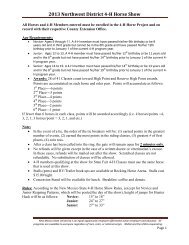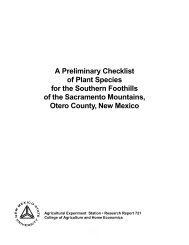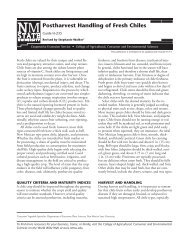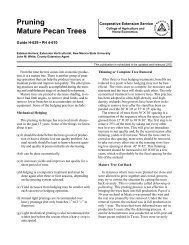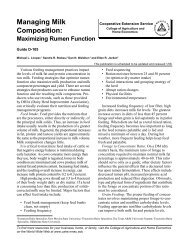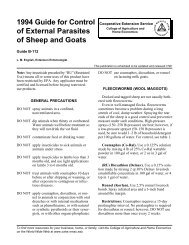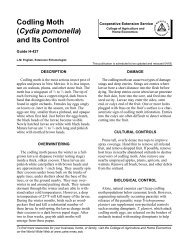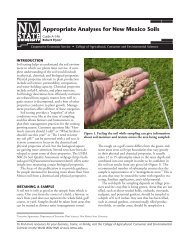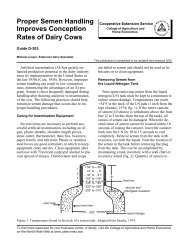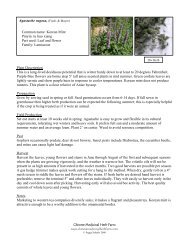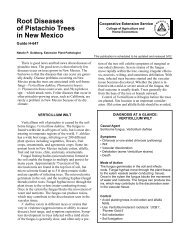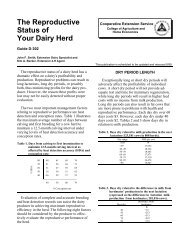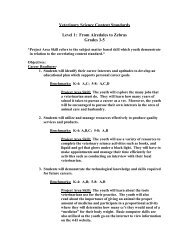Farm Resource Management (FRM) - College of Agricultural ...
Farm Resource Management (FRM) - College of Agricultural ...
Farm Resource Management (FRM) - College of Agricultural ...
Create successful ePaper yourself
Turn your PDF publications into a flip-book with our unique Google optimized e-Paper software.
AWATT <strong>Farm</strong> <strong>Resource</strong> <strong>Management</strong> Training ManualCompacted soil with low infiltration rate after rice is farmed in Baglan Province,November, 2009.Regardless <strong>of</strong> how healthy or alive the soil is right now, Egyptian clover as a cover crop can playa vital role in ensuring that the soil provides a strong foundation for a farming system. Whilethe most common reasons for including Egyptian clover crop in a farming system may relate tothe immediate short-term need, the continued practice <strong>of</strong> planting Egyptian clover becomes aninvestment in building healthy soil over the long term.Egyptian clover improves soil in a number <strong>of</strong> ways. Protection against soil loss from erosion isperhaps the most obvious soil benefit <strong>of</strong> cover crops, but providing organic matter is a morelong-term and equally important goal. Cover crops contribute indirectly to overall soil health bycatching nutrients before they can leach out <strong>of</strong> the soil pr<strong>of</strong>ile or, in the case <strong>of</strong> legumes, byadding nitrogen to the soil. Their roots can even help unlock some nutrients, converting themto more available forms. Cover crops provide habitat or a food source for some important soilorganisms, break up compacted layers in the soil and help dry out wet soils.ADDITION OF ORGANIC MATTERThe benefits <strong>of</strong> organic matter include improved soil structure, increased infiltration and waterholdingcapacity, increased cation exchange capacity (the ability <strong>of</strong> the soil to act as a shorttermstorage bank for positively charged plant nutrients) and more efficient long-term storage<strong>of</strong> nutrients. Without organic matter, there is no soil to speak <strong>of</strong>, only a dead mixture <strong>of</strong>ground-up and weathered rocks.Organic matter includes thousands <strong>of</strong> different substances derived from decayed leaves, roots,microorganisms, manure and even groundhogs that died in their burrows. These substancesfunction in different ways to build healthy soil. Different plants leave behind different kinds <strong>of</strong>organic matter as they decompose, so the choice <strong>of</strong> cover crop will largely determine whichsoil benefits will develop.There is a portion in soil that can be called the ―active‖ portion and one that might be calledthe ―stable‖ portion, which is roughly equivalent to humus. The active fraction represents themost easily decomposed parts <strong>of</strong> soil organic matter. It tends to be rich in simple sugars andproteins and consists largely <strong>of</strong> recently added fresh residues, microbial cells and the simplerwaste products from microbial decay.Afghanistan Water, Agriculture and Technology Transfer Program 15



